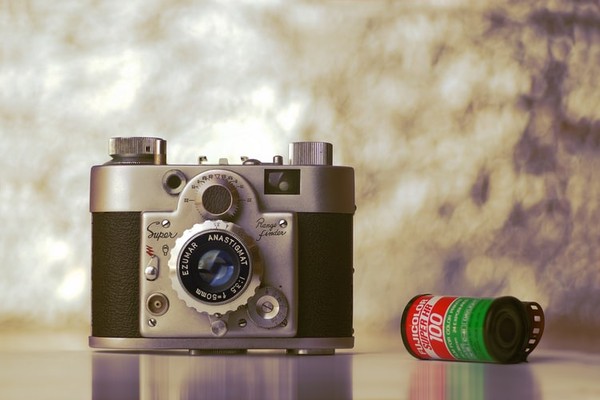canon收購
p support for the Pi hardware family.
In brief, the Pi 400 is a slightly faster version of the 4GiB Pi 4 that ships preassembled in a small, wedge-shaped chassis with integrated keyboard. The new model directly targets desktop replacement use and can be purchased solo for $70 or as a full kit (as seen above) for $100.
The new form factor—which has apparently been in the works ever since the introduction of the official Raspberry Pi keyboard—addresses and enthusiastically supports the Pi 4’s growing use case as a replacement or alternative for the traditional desktop PC. Upton told Ars that the Pi 400 is about 20-percent faster than the Pi 4; it has largely the same components under the hood but on a differently laid-out board, and its BCM2711 CPU is clocked a touch higher than the BCM2711 in the Pi 4.
The Pi 400 is simple to set up—all you need is its USB-C power cord, the included HDMI cord for video out, and the included mouse.
Jim Salter
The Pi 400’s keyboard layout is largely sane, aside from compressed arrow keys—but the whole thing is roughly four inches narrower than the corresponding part of a standard desktop keyboard.
Jim Salter
From the left: 40-pin GPIO header, microSD card slot, two micro-HDMI output ports, a USB-C power port, two USB 3.0 type-A ports and one USB 2.0 type-A port, Gigabit Ethernet port, Kensington lock slot.
Jim Salter
The visible hump on the underside of the Pi4 provides a comfortable typing angle and clearance for the passive-cooling vents.
Jim Salter
Unboxed and plugged in, the Pi 400 is functional but not particularly lovely. On the plus side, the integrated keyboard means fewer cables to deal with. Unfortunately, the remaining cables are unusually likely to snarl and look a bit feral. They are both stiffer and shorter than I’d prefer in an ideal world, making it difficult to impossible to end up with a setup that doesn’t look like a rat’s nest. The red cable for the mouse clashes pretty violently with the off-white cables for USB-C power and micro-HDMI out, which doesn’t help any.
That said, it’s important to remember that the entire kit retails for $100. Within the limits of the Pi 400’s very generous price, it’s not really fair to complain too hard about a few aesthetic gaffes here and there! Consumers with a few extra dollars to spend might want to consider replacing the Pi 400’s mouse with something a bit more functional, though… and a full-sized keyboard might not be a bad idea while you’re at it.
The integrated keyboard is functional but noticeably narrower than a standard keyboard. I’m not generally sensitive to variations in keyboard layout due to a long career involving Other People’s Computers in large numbers, but I was plagued with constant mistyping problems the entire time I tested the Pi 400.
Advertisement
It’s also worth noting that, while the Pi 400 supports dual displays, it does so with micro-HDMI ports, not full-sized ones—and it ships with a single cable. You’ll need an extra cable if you want to use your Pi 400 with dual displays—and since it ships with a micro-HDMI to HDMI cable, not an adapter, things will get complicated if you want to use it with, e.g., portable LED displays that have off-sized ports themselves.
Finally, there’s no 3.5mm audio jack on the Pi—if you’ve got it hooked to a television or a monitor with speakers, it can deliver audio over HDMI; otherwise you’ll need a supported USB audio device. I tested with an inexpensive USB gaming headset, which worked fine.
Impressions—Raspberry Pi OS
Raspberry Pi OS suspects you might be using it on a television, not a proper monitor—so it starts out with significant overscan boundaries by default.
Jim Salter
The overscan goes away after a reboot, if you tell the setup dialog, “Yes, I see big black borders.”
Jim Salter
We tried playing a 4K 60fps YouTube video on the Pi 400. Even at 1080p, not 4k, it dropped a lot of frames.
Jim Salter
Checking CPU utilization, we see that the system’s pretty much pegged while trying to play this 60fps video, even at 720p.
Jim Salter
I began testing the Pi 400 using its native Raspberry Pi OS Linux distribution—which is basically Debian with LXDE and a lot of middleware optimizing it for the Pi. Unfortunately, there’s almost nothing in the way of standard benchmarking utilities that run on ARM Linux—all I could find was the Phoronix Test Suite, which would have required more time to run than I had to test the device in total. So for the most part, I’m going to talk about my subjective experience, rather than hard numbers.
Further ReadingPinebook Pro review—a $200 FOSS-to-the-hilt magnesium-chassis laptopThe good news about the Pi 400 is that it does make a credible desktop PC, in the sense that, yes, you can totally use it without things breaking. With that said, you’re unlikely to forget that you’re using a very inexpensive ARM device. Much like the Pinebook Pro, the Pi 400 exhibits heavy latency while opening applications that’s perhaps possible to live with but impossible not to notice.
Also like the Pinebook Pro, once the applications are actually open, they generally run smoothly enough—although we did find the Pinebook Pro’s hex-core 2.0GHz big/1.5GHz little CPU noticeably punchier than the Pi 400’s straight 1.8GHz quad-core. The biggest problem I had was with high-resolution, high-frames-per-second YouTube videos.
I only tested the Pi 400 with a 1080p monitor, so I can’t speak to its chops with 4K videos—but it’s absolutely not capable of handling the Costa Rica in 4K 60fps HDR video without visible frame drop, even at 720p. The major issue here appears to be the 60fps rate, not the 720p resolution. I also tested the “Forests” episode of Netflix’s docu-series Our Planet on YouTube at 1080p, and that video played back flawlessly.
Examining CPU utilization during playback of the 60fps Costa Rica video, we can see the little 1.8GHz Broadcom quad-core CPU struggling—it’s at its limits, with CPU utilization for all cores at more than 90 percent. Although the BCM2711 supports hardware offload of video decoding—without which, this video would be playing in seconds per frame, rather than just dropping frames a bit—the hardware offload can only do so much, and the CPU is being asked to take on more than it can handle in software.
Advertisement
This effect is even more visible when entering or leaving full-screen playback. On a standard desktop PC, that operation takes perhaps 100-150ms. On the Pi 400, it frequently takes as much as three or four full seconds, during which the video itself tends to keep playing, but the surrounding controls and framework only partially render/stop rendering while the shift finishes taking place.
Further ReadingBattle of the $350 la

▲底片相機能拍出復古質感風格的照片。(示意圖/Photo by VanveenJF on Unsplash)
記者張家瑋/綜合報導
近年來復古當道,從摺疊式掀蓋手機到底片相機,都掀起流行風潮。底片相機除了可以享受剎那瞬間的畫面捕捉,也能有收到沖洗照片時的滿滿驚喜感。Podcast節目《娜你知道嗎》主持人莫娜就來聊聊底片相機的逆勢回歸。
▲點擊收聽Podcast《娜你知道嗎》,搞懂底片相機有多夯。
莫娜分享了近期歌手伍佰老師的專訪,提到自己隨身攜帶的10個必備物品,其中包括他的相機收藏。伍佰老師以小相機和大相機來形容他的相機們,並表示這些相機是他的通行證,無論身在何處,都會攜帶著它們。令人驚訝的是,他擁有多達5台不同型號的理光GR相機,將它們視為珍貴的收藏品。
伍佰老師所擁有GR-1V和GR-1兩款理光底片相機,分別是在90年代和00年代初期所推出,這些相機以其獨特的色彩和質感而聞名,被譽為街拍神機,至今仍然受到大眾喜愛。特別值得一提的是,日本街頭攝影師森山大道的作品,大部分也都是以隨身攜帶的GR21所拍攝。
而隨著底片相機熱潮再起,底片的需求也隨之上升,加上各大廠近年陸續宣布停產和原物料短缺,導致價格持續上漲。舉例來說,一卷「富士業務100」(24張)的價格已達到了270元台幣,這個價格足夠買一張64GB的SD記憶卡,可以存儲上千張照片。

▲莫娜也分享了幾台CP值高的底片相機。(示意圖/取自免費圖庫pixabay)
莫娜也分享了幾台底片相機,像是Kodak柯達的Ektar H35,它具有現代感,被稱為CP值最高的相機之一,非常適合想要節省底片拍攝成本的人,僅需一兩千元即可入手。另一個選擇是Olympus Trip 35底片相機,它於1967年推出,具有濃厚的復古風格。最後一款則是
canon收購canon
canon收購canonet QL17底片相機,許多玩家視為最值得收藏的旁軸相機之一,它具有快速裝入底片的功能,在自動模式下,鏡頭會自動測光,並且通過觀景窗內的指針顯示光圈值,不過,這款相機更適合有經驗的攝影愛好者。
底片相機的魅力在於它們獨特的風格和拍攝體驗,不僅能夠激發攝影愛好者的靈感,還能帶來很多樂趣和回憶,你手上有底片相機在使用嗎?不如趁著連假時拍一卷,重新感受復古風潮吧。
canon收購
canon收購